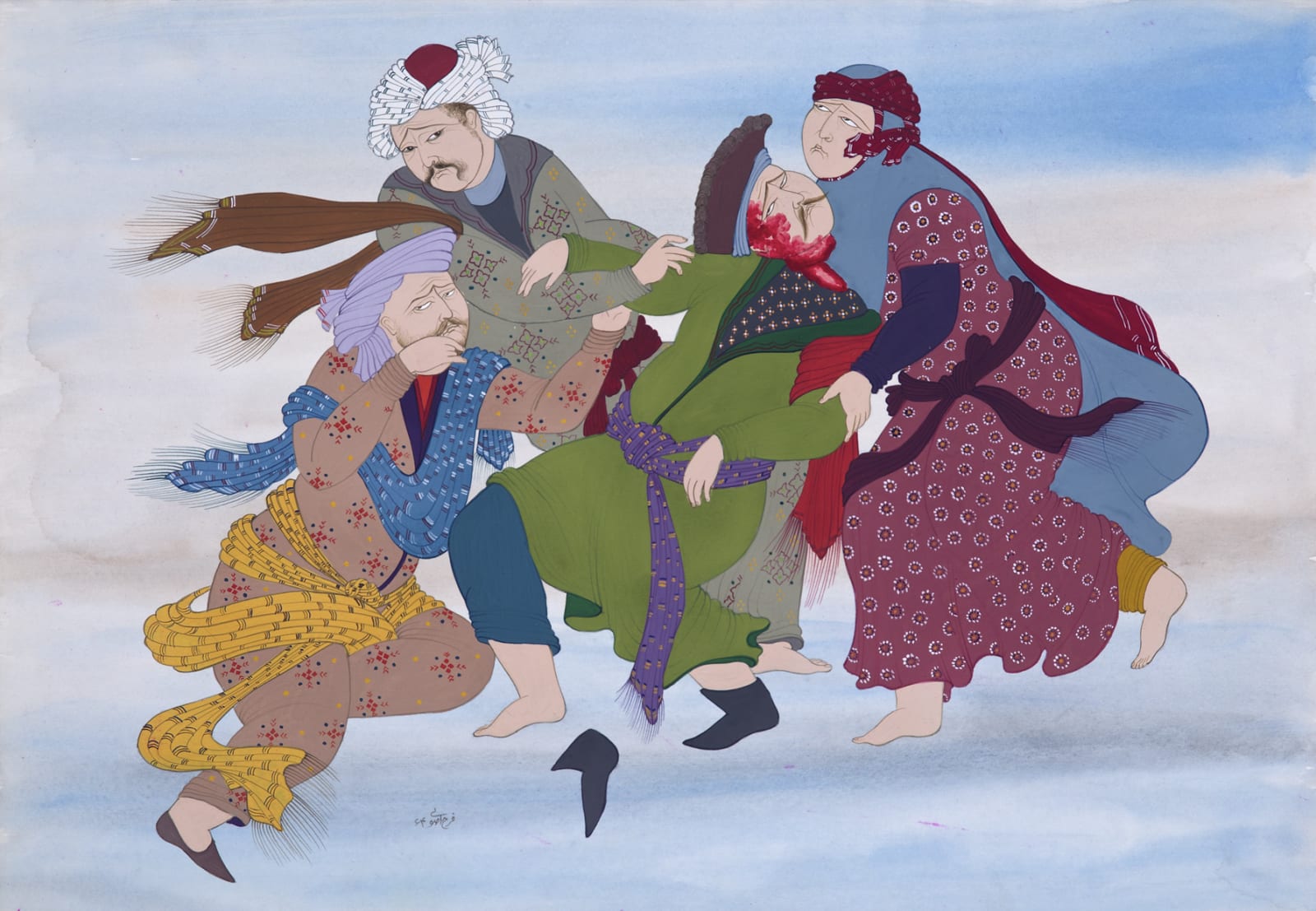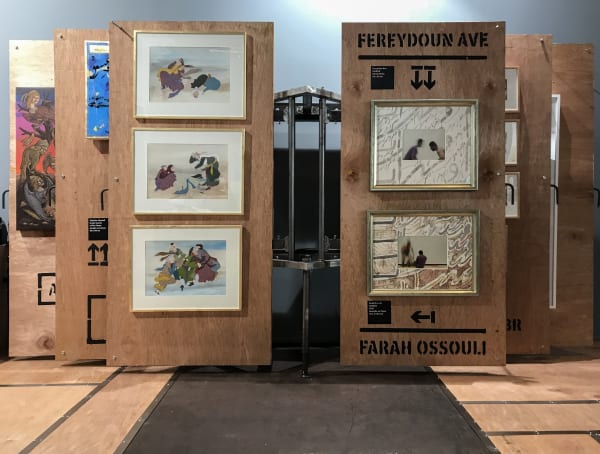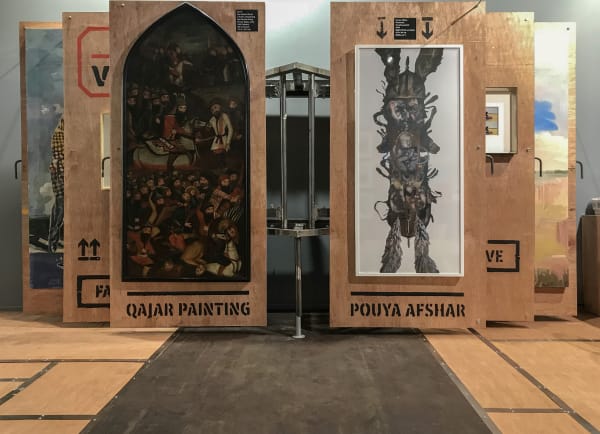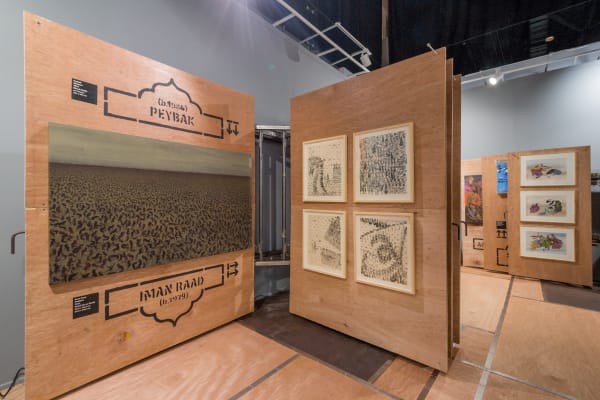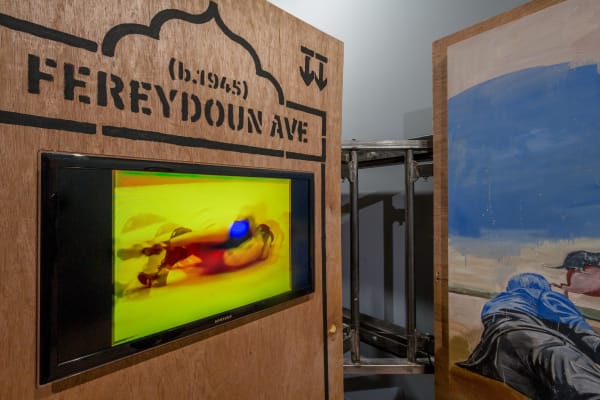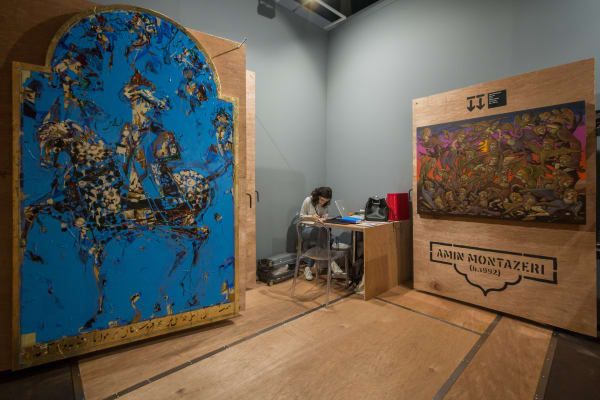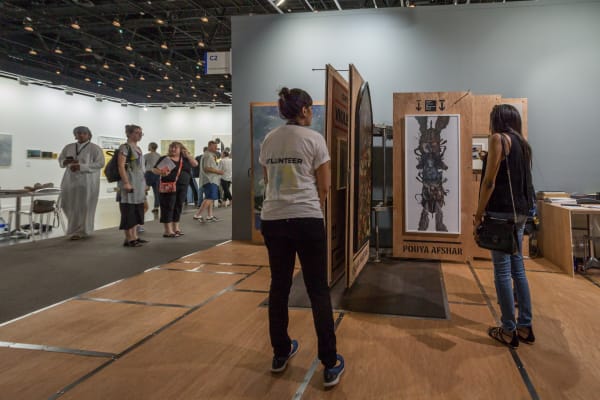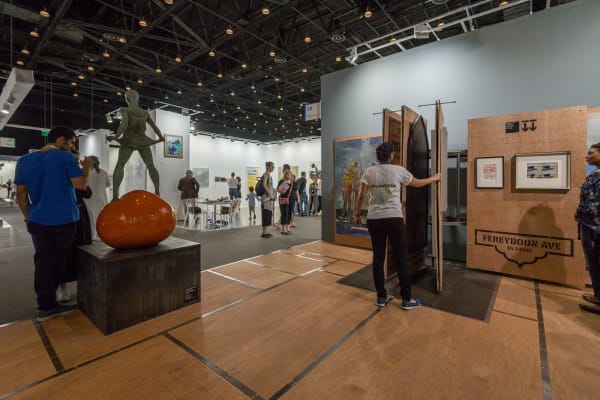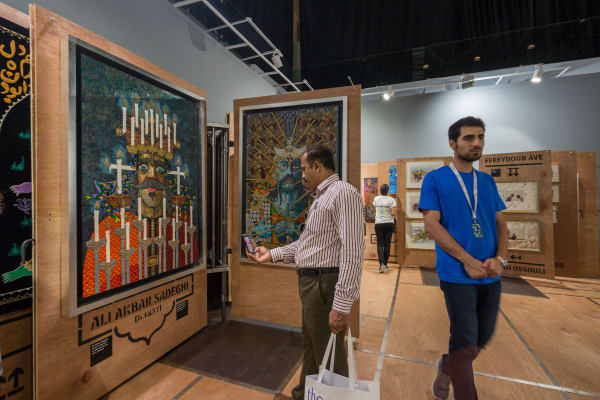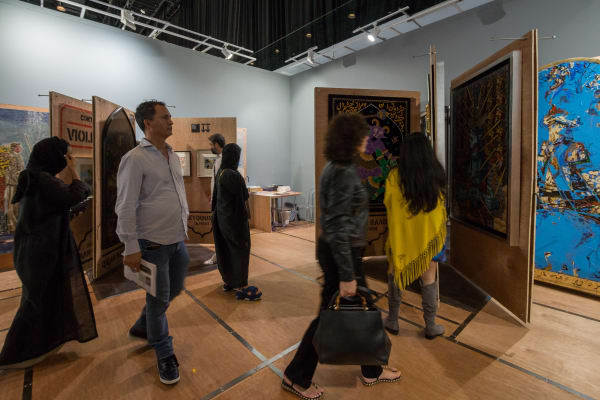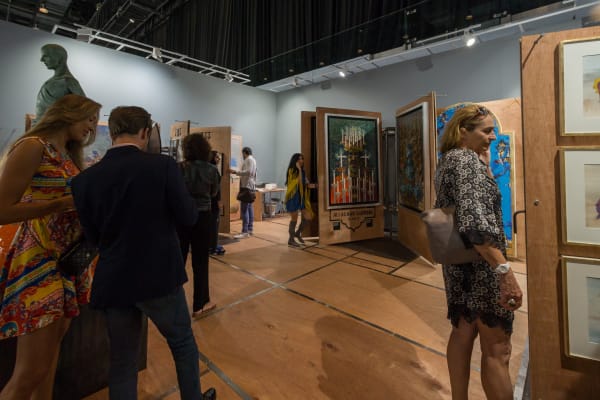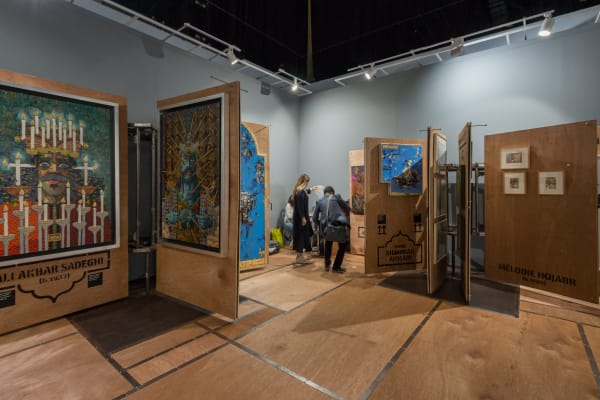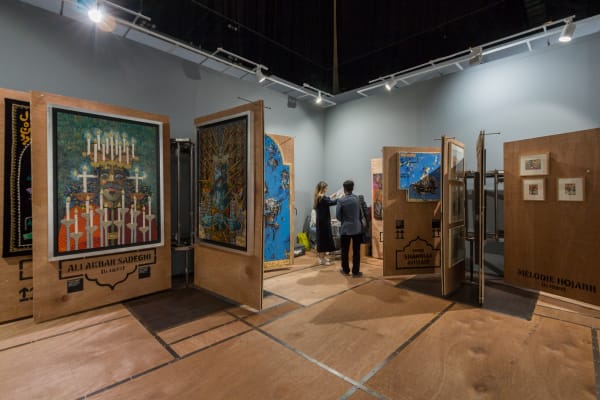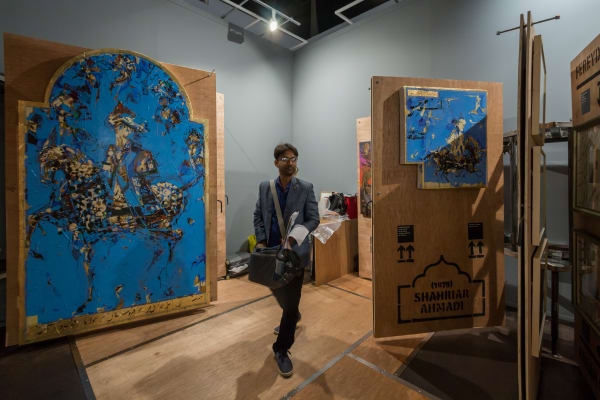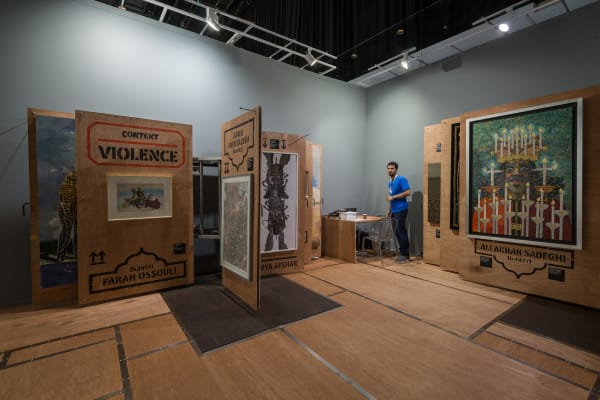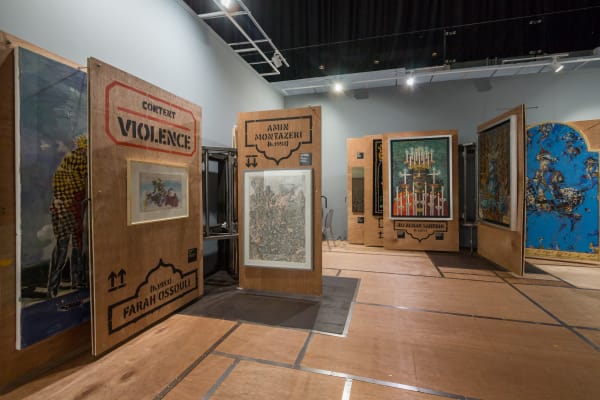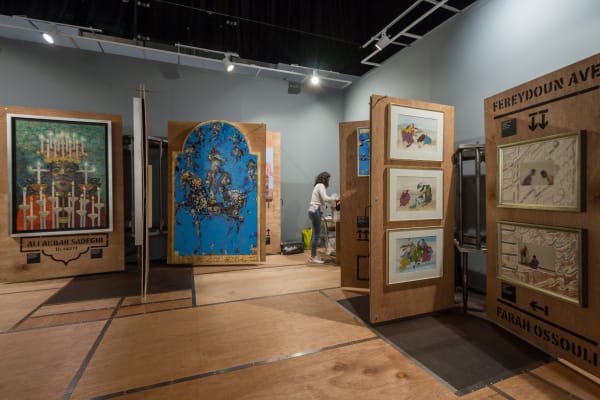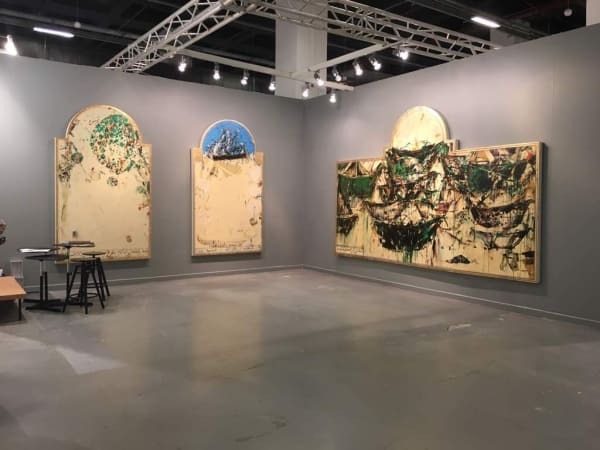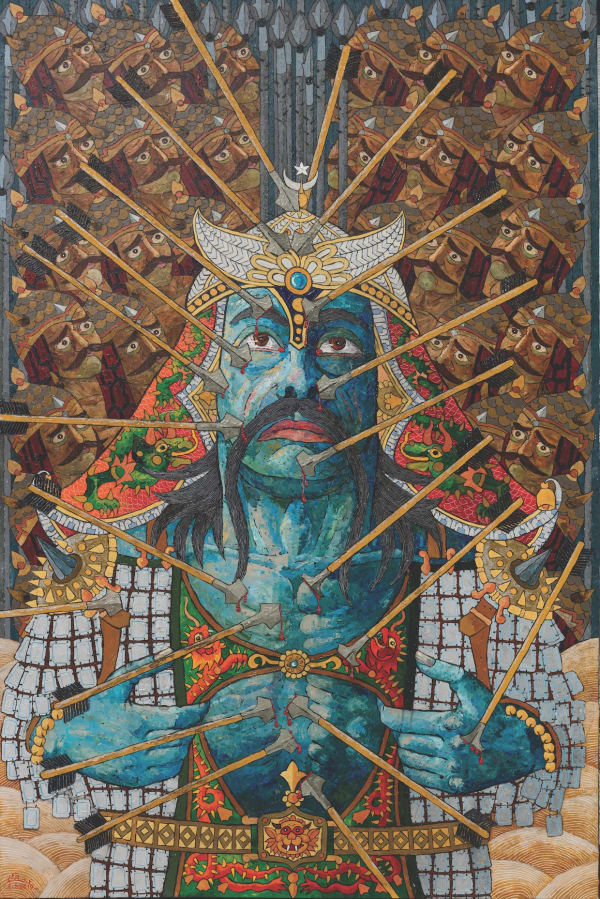"Mossavar-Nameh": Art Dubai 2018
Mossavar-Nameh
A Dastan Project
Art Dubai 2018
Booth C2
Curatorial Team: Hormoz Hematian, Aria Kasaei, Ashkan Zahraei
Concept: Hormoz Hematian
Booth Design: StudioKargah — Aria Kasaei
Structure Design and Production: Mohammad Hossein Gholamzadeh
Executive Consultant: Marco Djermaghian
Associate Curator and Coordinator: Roxana Afkhami
At Art Dubai 2018, Dastan presents its most recent incarnation of Mossavar-Nameh (lit. ‘Book of Illustration’) at Booth C2. Works by twentieth- and twenty-first-century Iranian masters Ardeshir Mohassess, Fereydoun Ave, Ali Akbar Sadeghi, Farshid Maleki, Farah Ossouli, and Nicky Nodjoumi are presented along with pieces by more contemporary Iranian artists, including Pouya Afshar, Shahriar Ahmadi, Mohsen Ahmadvand, Mohammad Hossein Gholamzadeh, Mélodie Hojabr, Amin Montazeri, Peybak, Kour Pour, and Iman Raad, and complemented by a number of paintings from nineteenth-century Iran.
The current presentation of Mossavar-Nameh, which literally translates to ‘Book of Images’, has been inspired by the idea of binding the project into a book, and has been long in the making. This iteration of Mossavar-Nameh has been curated by Hormoz Hematian, Aria Kasaei, and Ashkan Zahraei. The concept was introduced by Hormoz Hematian, the structure designed and produced by artist Mohammad Hossein Gholamzadeh, and the visual identity and graphical elements designed by celebrated Iranian designer and StudioKargah’s co-founder and co-director, Aria Kasaei.
-
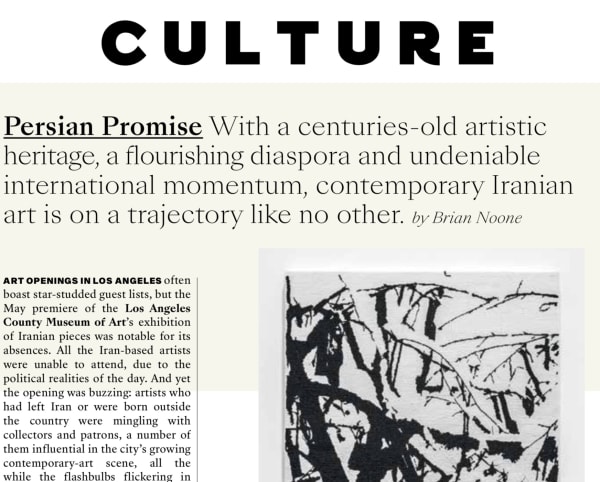
Persian Promise
Departures September 18, 2018In the Q3 Issue of 'Departures' (Europe, the Middle East, Asia-Pacific and Latin America Edition), an article has been published with references to Dastan's participation...Read more -

Dastan will host two exhibitions by Fereydoun Ave \ From Art Dubai, Art Basel and Frieze New York to Publishing Bahman Kiarostami Photo Book according to Hormoz Hematian
Honaronline April 17, 2018Honaronline have recently published an article discussing Dastan's recent and future projects with Hormoz Hematian (in Farsi). Click here to read it in full.Read more -

International Approval of Iranian Art: Art Dubai 2018 according to Aria Eghbal, Yasaman Matinfar, Hormoz Hematian and Ehsan Rasoulof
Honaronilne April 17, 2018Honaronline have recently published an article regarding Iranian art at this year's Art Dubai (in Farsi). Click here to read it in full.Read more -

Meet 7 Power Players Remaking the Cultural Landscape of the Middle East
artnet April 16, 2018Artnet has published an article about key figures of Middle Eastern Art that have spectacular efforts for the art of region. There are two Iranians...Read more -

Independent Growth: Art Dubai 2018
Ocula April 13, 2018Ocula has recently published an article on presentations at Art Dubai 2018. Click here to read it in full. From the Article: 'Indeed, while attending...Read more -
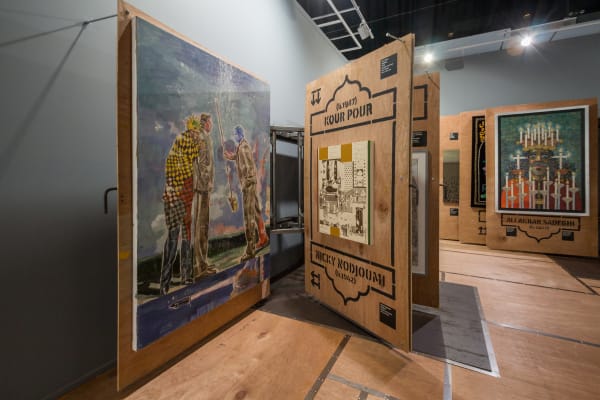
Der Kronprinz mag es modern
The Frankfurter Allgemeine Zeitung (FAZ) March 30, 2018The Frankfurter Allgemeine Zeitung (FAZ) has recently published an article on Art Dubai 2018. Click here to read it in full (German).Read more -
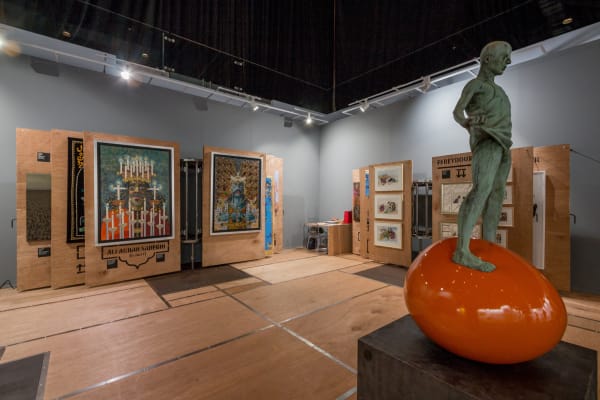
Best of Art Dubai 2018
Dubai Fashion News / InBusiness March 26, 2018UAE's Dubai Fashion News and InBusiness have recently published an article by Marta Garrido titled 'Best of Art Dubai 2018' highlighting some of the presentations...Read more -
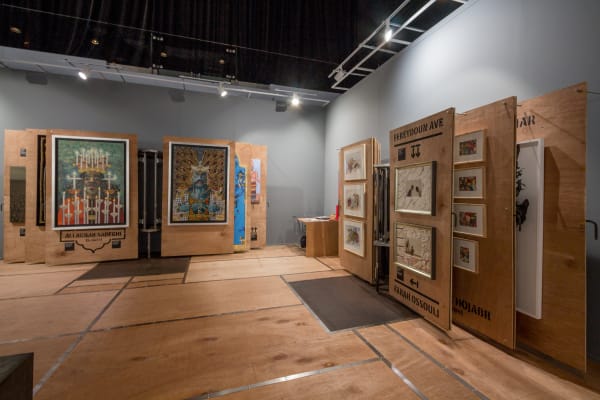
Art Dubai s’internationalise
Le Quotidien de l'Art March 26, 2018Le Quotidien de l'Art has recently published its take on Art Dubai 2018 featuring the presentation at the booth of Dastan's Basement, interviews and analyses....Read more -
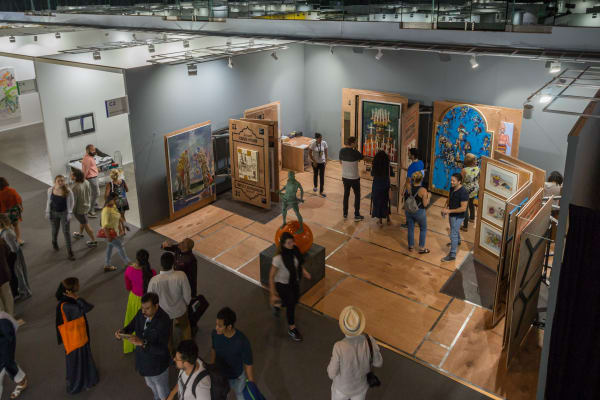
Art Dubai Finds Its Footing Thanks to a Saudi Art Renaissance and the New Louvre Abu Dhabi
Artnet News March 26, 2018Artnet News has recently published an article by Arsalan Mohammad discussing Art Dubai 2018. The article features interviews and analyses on attendance and sales during...Read more -
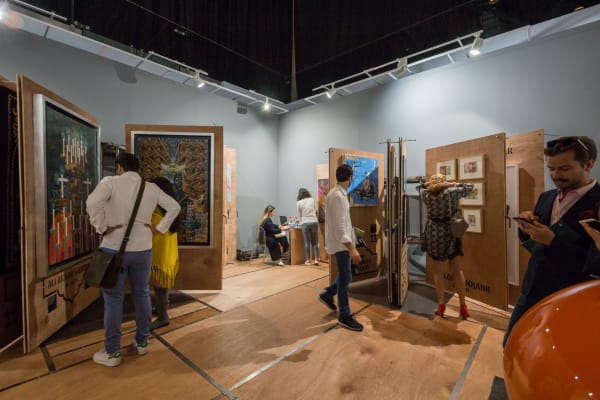
Highlights of Art Dubai 2018
Selections Magazine March 26, 2018Anna Seaman has recently published her take on Art Dubai 2018 on Selections Magazine's webiste. Click here to read the full article on Selections, or...Read more -

Art Dubai 2018: Must-Visit Booths
Harper's Bazaar Arabia March 21, 2018Harper's Bazaar Asia has featured the booth of Dastan's Basment as one of the must-visit booths at Art Dubai 2018. Click here to read the...Read more
* For Press:
High-Resolution Images:
https://www.dropbox.com/sh/1srlorm97mydats/AADYDYRZAtS4DPpfcFxDLQQRa?dl=0
Vector Files of Dastan Logos:
https://www.dropbox.com/sh/2mk4xh067laiiup/AABya00gWK-qG2UoiwssNwCDa?dl=0
Press Release
At Art Dubai 2018, Dastan presents its most recent incarnation of Mossavar-Nameh (lit. ‘Book of Illustration’) at Booth C2. Works by twentieth- and twenty-first-century Iranian masters Ardeshir Mohassess, Fereydoun Ave, Ali Akbar Sadeghi, Farshid Maleki, Farah Ossouli, and Nicky Nodjoumi are presented along with pieces by more contemporary Iranian artists, including Pouya Afshar, Shahriar Ahmadi, Mohsen Ahmadvand, Mohammad Hossein Gholamzadeh, Mélodie Hojabr, Amin Montazeri, Peybak, Kour Pour, and Iman Raad, and complemented by a number of paintings from nineteenth-century Iran.
The current presentation of Mossavar-Nameh, which literally translates to ‘Book of Images’, has been inspired by the idea of binding the project into a book, and has been long in the making. This iteration of Mossavar-Nameh has been curated by Hormoz Hematian, Aria Kasaei, and Ashkan Zahraei. The concept was introduced by Hormoz Hematian, the structure designed and produced by artist Mohammad Hossein Gholamzadeh, and the visual identity and graphical elements designed by celebrated Iranian designer and StudioKargah’s co-founder and co-director, Aria Kasaei.
One of the common aspects of all the artists presented in Mossavar-Nameh is their interest in books and book-making: From Ardeshir Mohassess’ more than ten books of drawings to Farshid Maleki’s recent publication* featuring his drawings and poems, Ali Akbar Sadeghi’s several books of illustration to Nicky Nodjoumi, Iman Raad, and Mélodie Hojabr published narrative drawings, Shahriar Ahmadi’s vast library of literary and Sufi books from which he draws inspiration for creating his story-like panels, Fereydoun Ave’s penchant for artist books, Farah Ossouli’s narrative painting, and many more.
In the Safavid Period (1501-1722), known as the Golden Age of Persian Art, the ultimate artworks were works of architecture, carpets and books. While much has been written on the architectural wonders and carpets of the era, the literature on the Persian art of book-making has been relatively scarce. Both before and during the Safavid period, books were one of the most important mediums in which the close collaboration of the painter (Mossaver), the calligrapher (Khat’taat), the designer (Mozah’heb) and the binder (Sah’haaf), resulted in a single coherent piece.
This project has been inspired by the same interest in creating books and has been inspired by the Persian tradition and art of book-making. In Mossavar-Nameh, the idea of a single Mossaver (painter) has been replaced with incorporating the works of artists from several generations and media into three books. Basing its conceptual roots in the Persian art of book-making, the current project presented in Booth C2 at Art Dubai 2018, has demanded the same collaborative effort as its celebrated ancestors used to. In this incarnation, the curatorial team has tried to narrate the story through its selection and presentation of the artists (the Mossavers) hence taking the role of the Khat’taat or the calligrapher. This narrative (curatorial project) is designed by StudioKargah’s Aria Kasaei who takes the responsibility of the Mozah’heb or the designer, and ultimately bound into three giant books by sculptor Mohammad Hossein Gholamzadeh, the Sah’haaf (binder), who embodies this presentation into the form of the books.
* “Farshid Maleki”, published by Emkan Gallery, Tehran, 2017
MOSSAVAR-NAMEH: CURATORIAL CONCEPT
The curatorial concept of Mossavar-Nameh was designed through studying many twentieth- and twenty-first-century Iranian artists with regards to their sources of inspiration, themes, and techniques throughout their careers.
The criteria for including artworks/artists in Mossavar-Nameh Project fall into three broad categories: 1. Content; 2. Appearance/Form; and 3. The Artist. Each category consists of a series of subcategories detailed as follows:
1.1. Content—NARRATIVE The artist expresses ideas through illustration/visualization/animation of literary texts and narrativity using images that entail sequencing of the fictive events, either chronologically or arbitrarily
1.2. Content—SATIRE The artist uses techniques such as satire, parody, or comic exaggeration in order to portray sociocultural or sociopolitical issues and comment on them. In this course, the artist uses metaphorical language and other figurative techniques such as parody, fable, and allegory
1.3. Content—HISTORY & MYTHOLOGY The artworks are inspired by mythological history, sometimes mixed with actual history and politics
1.4. Content—VIOLENCE The artist portrays instances of patriarchal violence, war practice, male chauvinism and macho men in the artworks
2.1. Appearance—CARTOONISTIC The artist creates artworks that are cartoon-like in nature, expressed through illustration techniques or techniques inspired by illustration or its contemporary practices
2.2. Appearance—HISTORIC IMAGERY The artist refers to historical or literary texts such as myths, legends, religious stories, folk stories and employs of classical allusions and analogies
2.3. Appearance—INTERCONNECTIONS The artist invokes visual resources and cites artists, methods, and techniques from others
3. THE ARTIST The artist becomes part of a larger tradition of artists, hence in Mossavar-Nameh’s research, the trends in their works become more significant than their biographical information
Mossavar-Nameh: Timeline
As part of its curatorial research, Dastan has sustained a particular interest in delving into potential lines of influence among Iranian artists of different generations. The most developed of Dastan’s studies is “Mossavar-Nameh” (lit. ‘Book of Illustrations’) which started with “A Tribute to Ardeshir Mohassess” Exhibition at Sam Art and the publication of “Ardeshir Hyphen Seventeen Eighty Seven” Book (written by Dariush Kiaras, winner of Sarv-e-Noghrei award for best book design, designed by StudioKargah and Aria Kasaei, published by Dastan and Pejman Foundation), in January 2015. This was an archival exhibition of works on paper and print materials by the late Iranian cartoonist and illustrator Ardeshir Mohassess (b. 1938, Rasht, Iran — d. 2008, New York). These, which were the starting points of Mossavar-Nameh, soon spun off as a separate —but very much related— line of study, Ardeshir Project.
Later in the year, in October 2015, “Mossavar-Nameh”, which was Dastan+2 debut show, became the first exhibition to put together artworks by a number of twentieth- and twenty-first-century Iranian artists based on a set of criteria defined as Mossavar-Nameh. These criteria were developed as a result of explorations into each artist’s practice over the course of years in an effort to find common sources of inspiration and influence in their methods, styles, or schools. Since the scale of this endeavor could never be contained within a single gallery exhibition, this project has since been a work in progress.
Mossavar-Nameh as a project continued to show an exhibition of works by Farah Ossouli titled “Wounded Virtue” (Dastan+2, December 2015). In the exhibition, Farah Ossouli, a pioneer in introducing contemporary themes and ideas into Miniature Painting, presented a series of her recent Miniatures inspired by famous paintings of art history, Persian poetry, news and media, and violence in contemporary history.
In “A Show of Forty Drawings and Some by Iman Raad” (at the former building of Shirin Confectionary in Tehran, A Dastan:Outside Project, June 2015), which marked Raad’s first solo exhibition in Iran, the artist indeed presented forty small drawings, but extended beyond those to draw on all the available walls in the almost 300sqm space. The exhibition was themed around Div, an ever-present characters in the literature of our region, and used this mythological creature as the narrator of a fable that seemingly takes place in contemporary ‘chaotic’ Tehran.
Shahriar Ahmadi’s work were presented at Dastan’s booth in Contemporary Istanbul 2016 (November 2016). Ahmadi, who has collected a vast library through his years of reading and research, creates works often carry in themselves deep allusions to Persian myths, classical literature, mysticism, and religious stories. The presentation at CI 2016 included works from “1001 Nights” and “Good Soil” series, that were inspired by classical Persian literature and writing.
In December 2016, as part of Ardeshir Projects, Dastan+2 hosted the exhibition “Ardeshir: Stormy Weather”, which included works from one Ardeshir Mohassess’ best-known periods of work, “Ardeshir and Stormy Winds”. Simultaneous to the exhibition, “Ardeshir: Stormy Weather” book (winner of Sarv-e-Noghrei award for best book design, designed by StudioKargah and Aria Kasaei) was published by Dastan. The book included an updated year-book of Ardeshir’s life written by Dariush Kiaras, with English translation by Sohrab Mahdavi.
The most recent presentation of Mossavar-Nameh was at UNTITLED, Art San Francisco 2017 (January 2017), during which Dastan hosted recent works by Iman Raad at its booth in the art fair. The pieces presented in the art fair were a series of “Gol-o-Morgh”-inspired paintings. They contained multi-layered allusions to traditional Iranian painting, tiling, and Persian Miniature, as well as references to graphic design and the printing industry. They highlight both the artist’s cultural roots and inspirations, as well as his previous career in graphic design.











